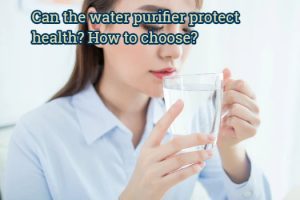Can the water purifier protect health? How to choose?
- by reallymake
- January 4, 2022
With a population of 1.4 billion, many places in our 濾水器推薦 country are still facing the dilemma of poor water quality. More and more people choose water purification devices to clean drinking water and improve water quality. So, how should it be used to protect health to the greatest extent?
Common filtering methods
There are a lot of water purification technology devices on the market. The research on their filtration effect mainly depends on the material of the filter element. Generally, they can be divided into PP cotton, microfiltration membrane, ultrafiltration membrane, RO reverse osmosis membrane and so on. These four gadgets sound very high-tech. In fact, the basic principle of their work is that we are all companies that use physical barriers to filter out foreign objects other than water.
Specifically, these four materials have different filtering effects due to different material pore diameters.
The pore size of the PP cotton core can be the largest, blocking the visible particles in the water, such as sand, red insects, rust, algae, colloids, suspended solids, etc., does not solve the problem.
The pore size of microfiltration membranes and ultrafiltration membranes is further reduced to nanometer and micrometer levels. Macromolecular substances, bacteria, and some viruses in the water can be removed, while soluble metal ions can pass.
Generally speaking, the RO reverse osmosis membrane with a pore size of only 0.001 microns is the best because it filters out almost a pure water without any other impurities.
Pros and cons of water purification methods
Some people think that maybe we would say that no matter what affects the water quality, isn't it enough to directly install the reverse osmosis membrane filter device?
If you only consider the filtering effect, this idea is true, but it is not the case in practical applications. Because the smaller the pore size, the more foreign matter that can be blocked, but the passage of water will also be blocked, making it difficult to flow out, or flow very slowly.
Therefore, if you install an RO reverse osmosis membrane device and want to obtain a normal water flow rate, you have to use a high-pressure pump to increase the water pressure and force the water to push the filter membrane. In this case, the life of the membrane will be shortened, and the membrane pores are also prone to clogging. That is to say, the filter membrane needs to be replaced or maintained frequently, and the cost will be relatively high.
As the company uses the PP cotton filter for different periods of time, impurities in the water will block the filter. Some activated carbon will also be saturated. We will find that it is not easy to work after the saturation failure problem. Generally speaking, it needs to be replaced within 6 months.
The microfiltration membrane and ultrafiltration membrane water filtration devices can filter most of the impurities, while retaining the minerals and trace elements needed by the human body. At the same time, the service life is relatively long and the cost is low, which can meet the needs of most families to improve water quality.
Related articles recommended
How can I choose a water purifier so that it won’t enter the pit?
How to buy a water purifier with practical and excellent price?
You can easily master the method of buying a water purifier in four steps
